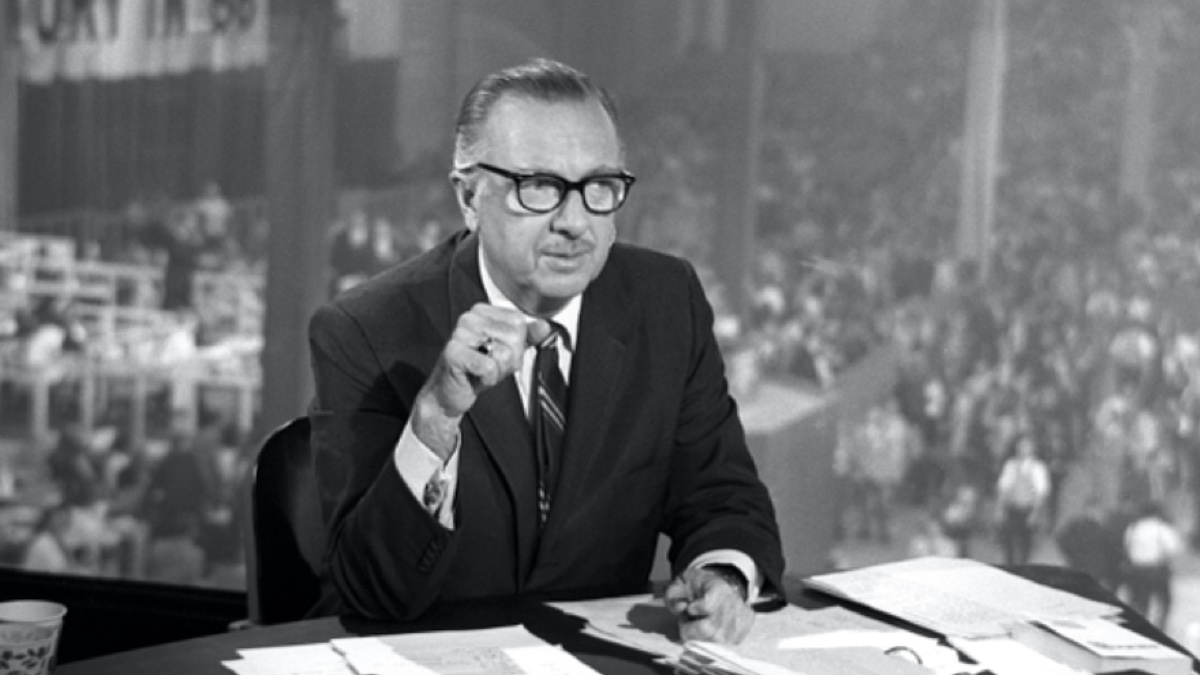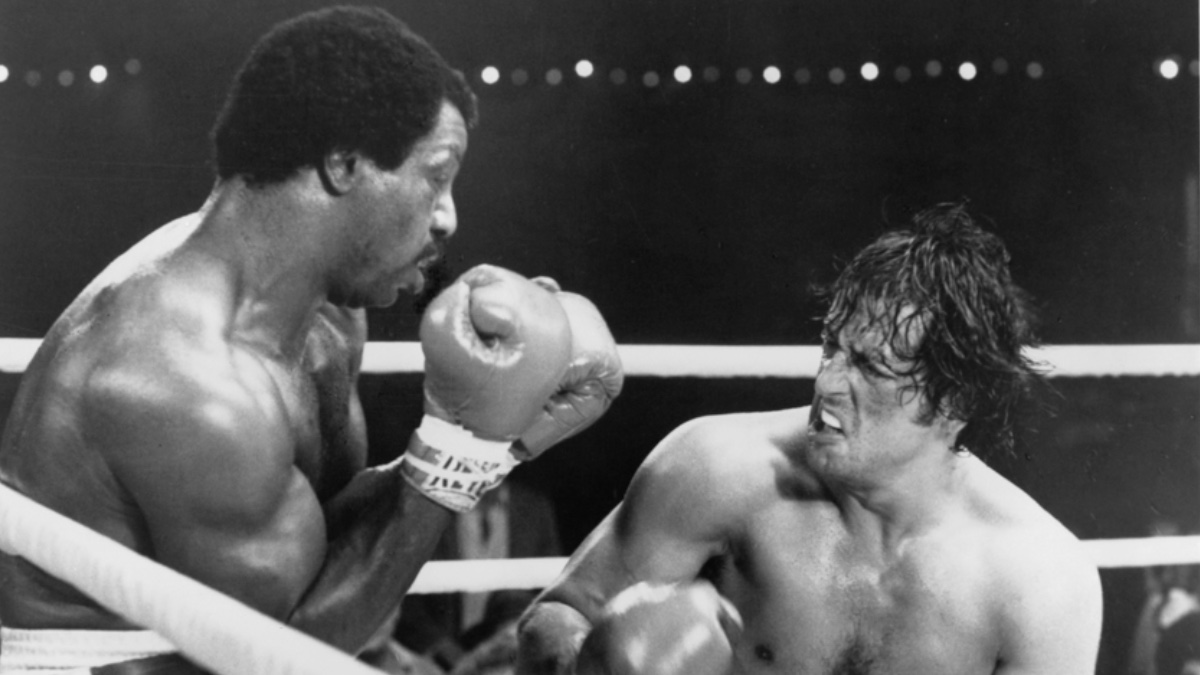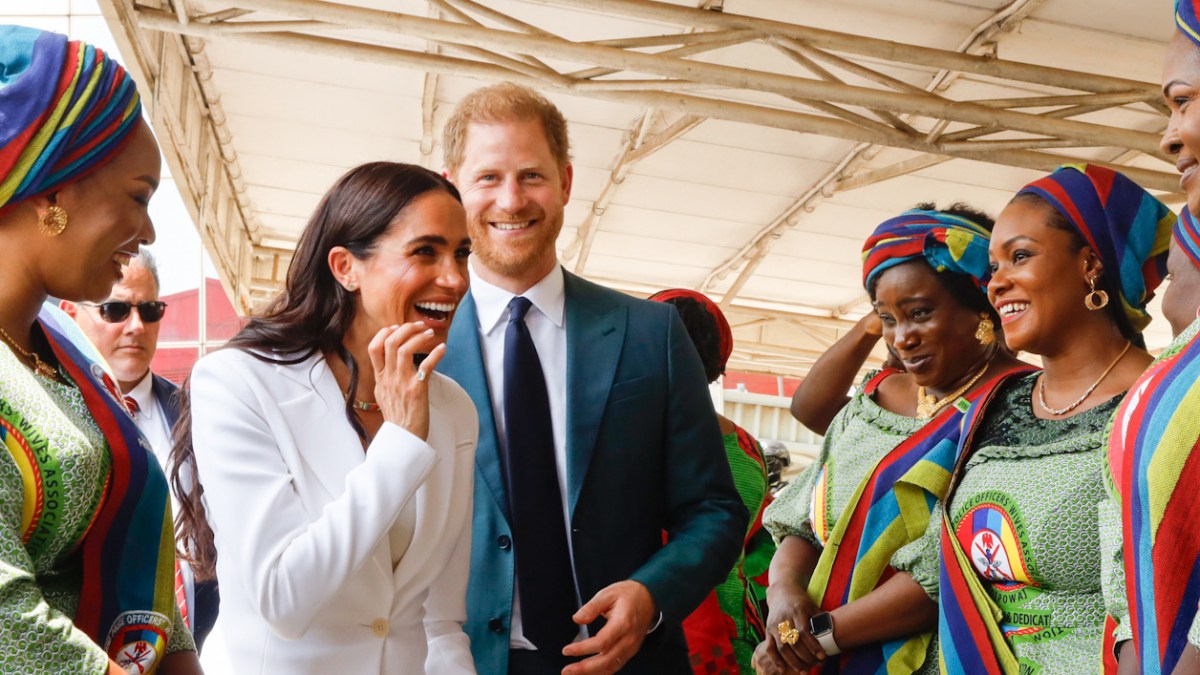In the late 1970’s, CBS filmed a special Star Wars segment for the show Universe and the fact-driven program was about to air something that was, well, not very factual.
Normally reserved for real scientific subjects, Universe decided to do a Star Wars segment — likely for ratings — which Walter Cronkite introduced as “The science behind a fictional universe.”
Cronkite’s visit to ILM (Industrial Light & Magic) was detailed in the third episode of the Disney Plus series, Light & Magic.
Ken Ralston, working at the time in the stop-motion department, recalls the day when CBS visited, saying, “We had heard Walter Cronkite was coming to ILM to talk to George Lucas.”
During the aired segment, George Lucas shows Cronkite around the facilities and basically explains how they do things. Of course, at the time, special effects on the original Star Wars film was rather revolutionary, so this segment — set to air in 1980 — was attempting to do something of a reveal by showing the audience how it’s done and just in time for the finished product, The Empire Strikes Back, to be viewed in theaters.
One of the shots involving puppet miniatures that the crew was in the midst of doing was of Han Solo riding a tauntaun. CBS producers thought this would make good footage, so the crew agreed to be filmed while working on the shot.
It then dawned on Ralston that no one would ever know what they were doing, except for Lucas, who was obviously also there. Ralston explained, “We know no one has a clue how we create these things and so we decided to do it in a way you would never do it.”
Before filming, Ralston and Phil Tippett went and grabbed whatever they could find. Ralston explains, “It’s the two of us in there. We brought in what’s called the surface gauge — a bunch of those — which is what animators use to mark little things on puppets. What else did we bring in? Some weird gizmos with rulers on it and whatever we could grab.”
Once they were ready to shoot they started setting all of their gadgets up against the puppets in nonsensical ways, clearly overdoing the surface gauge idea. Then, while CBS was filming, Ralston and Tippett started moving parts of puppets around slightly — but without any real direction or consistency, and without actually adhering to the “stop” in “stop-motion.” Basically, they made things up on the spot, and managed to keep a straight face the entire time.
Ralston says they were doing this “while Walter Cronkite is having a very serious conversation with George and talking about what we’re doing out there.”
During the aired segment, Cronkite looks on curiously — almost confusedly — and actually asks Lucas, “Are they looking at something to know what to do next, or are they just doing this out of their heads?”
That might be the funniest part of the whole segment, though the Light & Magic episode doesn’t show it.
The only thing that might be funnier is Lucas’ answer, which makes you wonder if he picked up on the fact that two of his crewmembers were just completely fabricating their work.
Lucas responded to Cronkite by saying, “It’s a whole art.”
I’m not sure how Ralston and Tippett weren’t on the floor by then. Cronkite keeps his seriously inquisitive face on the crew while Lucas decides to continue, saying, “They studied movement. They shot animals and studied them against grids and things to study motion and they practiced for months and months, doing tests.”
How Ralston was able to stay serious is quite the mystery, though he wasn’t exactly holding in his laughter while retelling the story. “We’re acting like we’re doing stuff but we weren’t doing anything for real and playing it very serious.”
The segment then briefly shows how the finished tuantaun shot appears on film, making one wonder how in the world they get that shot out of what they were doing.
“It was fun,” Ralston recounts, “We weren’t hurting anybody and if anyone actually knew we were doing it wrong it showed they had some idea of how the work actually was accomplished.” He later added, ““It sounds like me just trying to be a jacka**, which maybe it was.”
It also likely served as a way to not reveal their methods for any potential rival filmmakers out there.
It’s worth noting that the segment also shows the finished shot of the Millenium Falcon flying through asteroids, which Ralston explained is humorous in its own right because the asteroids are mostly potatoes.
Upon reflection, perhaps pulling such a joke on Walter Cronkite wasn’t the best idea, as Ralston concludes, “To do it with Walter Cronkite – who the fu** had the nerve?! C’mon! What were we thinking?”







